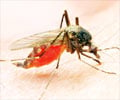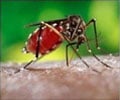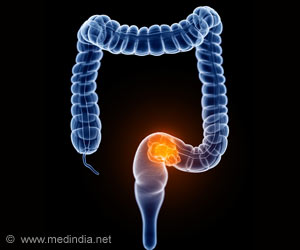Malaria is a preventable and curable disease and World Malaria Day’s objective is to concentrate on prevention and cure. Every year, April 25 is commemorated as World Malaria Day.

World Malaria Day 2015 Theme
The World Health Organization mission on World Malaria Day 2015 is to call for a high-level commitment towards eradicating malaria across the globe. The theme for WMD was set in partnership with Roll Back Malaria: “Invest in the Future: Defeat Malaria.” The theme has been running since 2013 and the call to action is to eradicate malaria globally.The World Malaria Day 2013-15 theme reflects the strategies to be presented by the WHO to the World Health Assembly in May. The post-2015 strategy’s objective is to reduce malaria cases and deaths by 90% by the year 2030.
The theme focuses on sustained investment in malaria prevention, treatment and future research, which requires political commitment from countries with endemic malaria. World Malaria Day is an opportunity for countries to learn from the experiences of other countries and also support other malaria-endemic countries. It also encourages emerging research in advanced malarial treatment and prevention.
While Malaria-endemic countries have been fighting against this killer, this disease still has a huge impact on people’s livelihoods and health across the world. In Africa, malaria kills almost half-a-million children under the age of five every year. However, sustained global efforts have saved approximately 3.3 million lives since 2000. Malaria mortality rates have reduced to 42% globally and 49% in Africa. An increase in political commitment and funding have reduced malarial incidence by 25% globally and 31% in Africa.
Critical to fighting malaria is increased funds for treatment and research. There is a dire need to combat drug-resistance in malarial patients and work on robust research in insecticide resistance.
What is Malaria?
Malaria is a parasitic disease spread through the bites of infected Anopheles mosquitoes. The Plasmodium parasites are transmitted through the Anopheles mosquito, which functions as a malaria vector. These mosquitoes mainly bite between dusk and dawn. The four parasitic species causing malaria are:- Plasmodium falciparum
- Plasmodium vivax
- Plasmodium malariae
- Plasmodium ovale.
Globally around 3.3 billion people across 106 countries are at malarial risk. In 2012, an estimated 627,000 deaths were caused by malaria. Malaria is most common in sub-Saharan Africa, Latin America, India and parts of Asia. Malaria is especially dangerous for children below 5 years of age, pregnant women and people with co-morbidities like HIV-AIDS.
Transmission
The transmission of malaria depends on a number of factors including the vector, the environment and the human host. Most of the malarial vectors (Anopheles mosquitoes) usually bite at dusk and through the night.Human immunity also affects the rate of transmission. In sub-Saharan Africa where malaria is rampant, the prevalence of sickle-cell anemia confers a protective mechanism against malaria.
According to Miguel Soares, Instituto Gulbenkian de Ciência (IGC), Portugal who led a research team to investigate the connection between sickle-cell anemia and malarial immunity, the sickle-cell mutation could have been naturally selected in sub-Saharan Africa to provide a protective mechanism in an area where malaria is a rampant killer.
What are the Symptoms of Malaria?
Malaria symptoms appear after 7-10 days after the infective mosquito bite. The initial symptoms include high fever, headache, chills and vomiting. These symptoms are often difficult to distinguish from other fevers but the primary marker of difference is severe chills and shivering.Malaria caused by P. falciparum can lead to severe complications and death if not treated within 24 hours. Children can get into complications including like severe anemia, respiratory distress and multiple organ failure if they are not treated on time.
Diagnosis and Treatment
WHO recommends that all cases of suspected malaria should be confirmed with the parasitic-based diagnostic testing before starting treatment. These test results are usually available within 15 minutes of testing. In some cases, clinical symptoms may be the sole guide to treatment.The best treatment for malaria is artemisinin-based combination therapy (ACT). Earlier forms of treatment like chloroquine are no longer effective due to drug resistance.
Prevention
The best way to prevent malaria is to control the vector which means mosquito control. Insecticide-treated mosquito nets, indoor and outdoor spraying of insecticide, low-cost body creams and sprays are useful in preventing mosquito bites. However, the drawback remains that all these products are of chemical origin.Malaria in India
Malaria in India is a serious public health concern. There were over 1 million cases reported in 2008 of which, half was due to the more dangerous P. Falciparum strain. Nearly 60% of malaria cases in South East Asia are from India according to the WHO World Malaria Report 2008.Malarial cases are reported from rural, urban and semi-urban areas. Incidence of malaria is more common in the vulnerable, marginalized populations who lack access to clean water, safe housing and sanitation facilities.
The Indian government along with public and private partnership has put in place a number of prevention and control programs. Much of the financing for these programs come from various sources like Central and State governments, The Global Fund, World Bank, USAID, WHO, UNICEF (United Nations Children’s Fund) and others.
India has also adopted a number of proactive measures in prevention and control including free distribution of insecticide-treated nets for all age groups (program adopted in 2001) and free ACT (artemisinin-based combination therapies, program adopted in 2006) therapy for all age groups in the public health centers and government hospitals.
Public health awareness programs have been raising awareness among the public on the importance of a clean environment for malarial prevention and control. People are advised not to store water in open containers to prevent larva breeding. Several measures have been taken by public health authorities in states across India to implement regular spraying of biological larvicides to avoid larva breeding. Authorities also execute programs in the post-monsoon season to minimize standing water puddles from becoming larva breeding grounds.
Prevention and control of malaria requires substantial funding, robust public-private health partnerships and massive public awareness campaigns if we are to become a malaria-free country.
Source-Medindia












